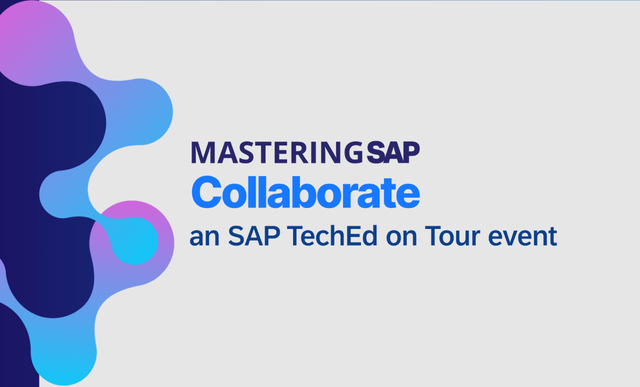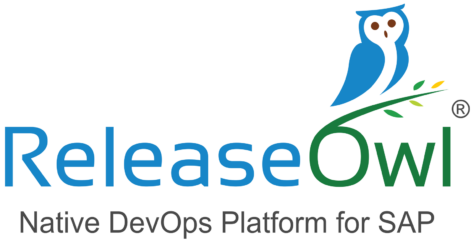SAP Messaging
Filter By
Browse By
- SAP Analytics and AI
- SAP Application Development and Integration
- All SAP Application Development and Integration
- SAP ABAP
- SAP ABAP Development Tools
- SAP ABAP Test Cockpit
- SAP API Management
- SAP BAPI
- SAP Basis
- SAP BRF
- SAP Business Application Studio
- SAP CMS
- SAP Design Studio
- SAP Development Tools
- SAP DevOps
- SAP EAI
- SAP EDI
- SAP Extension Suite
- SAP Fiori
- SAP Fiori Elements
- SAP Integration Suite
- SAP Low Code Application Development
- SAP Low Code Automation
- SAP Netweaver
- SAP Release Management
- SAP UI5
- SAP Web Application Server
- SAP Web IDE
- SAP Business Process Management
- SAP Center of Excellence
- SAP CIO
- SAP Customer Experience
- SAP Data and Data Management
- All SAP Data and Data Management
- SAP BW
- SAP BW/4HANA
- SAP Crystal Reports
- SAP Data Archiving
- SAP Data Center
- SAP Data Governance
- SAP Data Integration
- SAP Data Migration
- SAP Data Quality
- SAP Data Services
- SAP Data Strategy
- SAP Data Visualization
- SAP Data Warehouse Cloud
- SAP DMS
- SAP Document Control
- SAP EIM
- SAP ETL
- SAP ETL Tools
- SAP HANA
- SAP HANA Administration
- SAP HANA Deployment Infrastructure
- SAP HANA Studio
- SAP Master Data
- SAP Master Data Governance
- SAP MDM
- SAP Enterprise Architect
- SAP Enterprise Asset Management
- SAP ERP
- SAP Finance
- All SAP Finance
- SAP Accounting
- SAP AR AP
- SAP Asset Accounting
- SAP Billing Systems
- SAP BPC
- SAP BRIM
- SAP Cash Management
- SAP Central Finance
- SAP Controlling
- SAP COPA
- SAP Cost Center Accounting
- SAP Currency Risk
- SAP e-invoicing
- SAP FICO
- SAP Finance Automation
- SAP Advanced Financial Closing
- SAP Financial Consolidation
- SAP Financial Planning
- SAP FX Risk
- SAP General Ledger
- SAP Global Tax Management
- SAP Hyperion
- SAP Order to Cash
- SAP Payment Processing
- SAP Profitability Analysis
- SAP Rebate Management
- SAP S/4HANA Finance
- SAP SWIFT Compliance
- SAP Treasury Management
- SAP Universal Journal
- SAP Governance Risk and Compliance
- SAP Human Capital Management
- SAP Intelligent Technologies
- SAP Platform and Technology
- All SAP Platform and Technology
- SAP Business Technology Platform
- SAP Cloud
- SAP Cloud Connector
- SAP Cloud Integration Platform
- SAP Cloud Migration
- SAP Cloud Platform
- SAP Cloud Providers
- SAP Cloud Strategy
- SAP Digital Signature
- SAP Container Platform
- SAP HANA Enterprise Cloud
- SAP Digital Asset Management
- SAP Smart Forms
- SAP HEC
- SAP Digital Integration Hub
- SAP Hyperscalers
- SAP Infrastructure
- SAP Messaging
- SAP Quality and Testing
- SAP Security
- SAP Spend Management
- SAP Supply Chain Management
- All SAP Supply Chain Management
- SAP APO
- SAP Asset Management
- SAP Business Network
- SAP Digital Manufacturing Cloud
- SAP Digital Twin
- SAP EWM
- SAP IBP
- SAP Inventory Management
- SAP Label Printing
- SAP Logistics
- SAP Manufacturing
- SAP Manufacturing Automation
- SAP MES
- SAP MII
- SAP MM
- SAP MRO
- SAP MRP
- SAP Order Management
- SAP Plant Maintenance
- SAP PLM
- SAP Production Planning
- SAP S&OP
- SAP SD
- SAP SPM
- SAP Supply Chain Planning
- SAP Track and Trace
- SAP Transportation Management
- SAP System Administration
What is SAP Messaging?
Originally part of SAP Cloud Platform and called SAP Enterprise Messaging, SAP Event Mesh is a fully managed cloud service that allows for applications to communicate through events. Renamed from SAP Enterprise Messaging when SAP decremented the SAP Cloud Platform brand in favor of SAP Business Technology Platform, SAP Event Mesh is a managed cloud service that allows for real-time and asynchronous communication between different systems based on business events. Features of SAP Event Mesh include:
- Publishing business events from SAP and non-SAP sources
- Consuming business events from SAP and non-SAP sources
- Data transmission for both extension and integration scenarios
What is SAP Messaging?
Originally part of SAP Cloud Platform and called SAP Enterprise Messaging, SAP Event Mesh is a fully managed cloud service that allows for applications to communicate through events. Renamed from SAP Enterprise Messaging when SAP decremented the SAP Cloud Platform brand in favor of SAP Business Technology Platform, SAP Event Mesh is a managed cloud service that allows for real-time and asynchronous communication between different systems based on business events. Features of SAP Event Mesh include:
- Publishing business events from SAP and non-SAP sources
- Consuming business events from SAP and non-SAP sources
- Data transmission for both extension and integration scenarios
Being part of the SAP Business Technology Platform (SAP BTP) means that SAP Event Mesh can leverage other parts of SAP BTP, for example integration, to connect with solutions like SAP S/4HANA, SAP Business Technology Platform ABAP Environment, and non-SAP data sources in order to consume events and then have actions occur, through the publication of an event, in a linked SAP or non-SAP system.
Further Resources for SAPinsdiers
Accelerate Automation In SAP Workflow Management. When used in conjunction with a solution like SAP Workflow Management, SAP Event Mesh can be used to create an event driven architecture that can be used to significantly streamline processes across the organization. This article provides an example of setting up such an architecture that both simplifies and streamlines that process.
Uncover Process Chain Execution Errors When SAP NetWeaver BI Fails To Notify You. Looking at older SAP technologies, this article provides information on how take action in a situation where SAP NetWeaver Business Intelligence does not send out an email notification about an exception that is not picked up by the standard SAP Messaging function.
146 results
-

 Premium
Premium
Automatically Move Business Partners, Customers, and Vendors from SAP CRM to SAP ECC
Reading time: 71 mins
Create business partners, customers, and vendors in SAP ERP Central Component starting from SAP CRM. Then ensure that the data stays updated in both systems. The process involves the use of middleware and Customer/Vendor Integration functions. The combination of the two functions provides the total end-to-end solution. Key Concept In SAP ERP Central Component (SAP...…
-

 Premium
Premium
One-to-One Email Integration for MS Outlook Demystified
Reading time: 11 mins
SAP CRM 2005 offers one-to-one email integration, which enables you to transfer email directly from Microsoft Outlook into SAP CRM. You can interface inbound and outbound emails with SAP CRM via the People-Centric User Interface, then store the emails as activities. Follow the steps to set up this integration and see how you can customize...…
-

- SAP Project Management
 Premium
Premium
Collaboration Projects: An Overview of Business Process Flow, Configuration, and Integration
Reading time: 20 mins
At first glance, Collaboration Projects (cProjects) appears to be complex. However, you’ll discover that it can be easy to configure and use. Find out how cProjects can help you manage your projects, and learn how the Workforce Management and middleware integration synchronizes front-end applications with back-end SAP ERP Central Component modules. Key Concept Collaboration Projects...…
-
-

 Premium
Premium
Best Practices for mySAP CRM-to-CTI Integration Testing
Reading time: 11 mins
Desktop load testing is not the same as testing the integration between mySAP Interaction Center (IC) and the computer-telephony interface (CTI). Learn why and what constitutes an effective mySAP IC-CTI approach. Key Concept The computer-telephony interface (CTI) allows computer systems to act as a call center by linking them to the telephone system. It ensures that calls...…
-

 Premium
Premium
Publish SAP BI Content More Easily with SAP Enterprise Portal 6.0
Reading time: 18 mins
Among the benefits of SAP NetWeaver ’04 is better integration between SAP BI and SAP Enterprise Portal (SAP EP). This overview explains what the integration of SAP BW 3.5 with SAP EP 6.0 Support Stack ’04 (and above) provides. Key Concept SAP Knowledge Management (SAP KM) is a part of SAP BI that coordinates information...…
-

 Premium
Premium
Social Tools for the Business Part 2: How Your Company’s Image, Marketing Strategy, and Sentiment Analysis Efforts Can Benefit from Social Media Tools
Reading time: 13 mins
ManagementSocial media is becoming an invaluable tool for businesses to spread information, interact with customers, and collect public sentiment. If your company wants to create or improve its social media presence, read on to learn what tools to use and get tips for creating your initiative. Social media tools have quickly made their way into...…
-

 Premium
Premium
Tailor the Severity of System Messages to Your Needs
Reading time: 13 mins
Learn how to determine if a particular message is configurable and the required steps to alter the severity of a message. Follow this phased approach to ensure proper configuration in your SAP ERP system. The approach to adjusting the severity of a message consists of three phases: message control customizing, transactions SM30 and SM31, and...…
-
-

 Premium
Premium
Bringing ccBPM-based Integration Processes to SAP NetWeaver PO: Why Automation Doesn’t Work
Reading time: 11 mins
SAP NetWeaver Process Orchestration (PO) 7.31 offers a new way to build stateful integration processes using the new graphical standard Business Process Model and Notation (BPMN) for modeling as well as executing processes. Learn about potential problems you have to tackle while bringing your existing Business Process Execution Language (BPEL)-based old cross-component Business Process Management...…
-

 Premium
Premium
Keep Up with Multiple Regulations by Controlling Multiple Data Retention Policies
Reading time: 12 mins
Follow four steps to help you identify, prioritize, and plan a data retention policy. Key Concept A data retention policy is the policy on setting data retention periods to meet legal, compliance, and operational business requirements. Retention periods vary based on specific statute, legislation, or compliance regulations. Global companies often must comply with multiple compliance...…
-

- SAP Business Application Studio
 Premium
Premium
Take a Serious Look at the “A” in SOA and Gain Flexible, Adaptable Architecture
Reading time: 24 mins
Understand what the ideal architecture for an enterprise-ready composite application should look like. Discover the pitfalls involved, how to avoid them, and how your decisions influence the overall complexity of the final application. By following these recommendations, you can develop applications that are well prepared for your always-changing IT landscape. Key Concept The basic idea...…
Become a Member
Unlimited access to thousands of resources for SAP-specific expertise that can only be found here.
Become a Partner
Access exclusive SAP insights, expert marketing strategies, and high-value services including research reports, webinars, and buyers' guides, all designed to boost your campaign ROI by up to 50% within the SAP ecosystem.
Upcoming Events
-

Mastering SAP Collaborate, an SAP TechEd on Tour event
November 12 - 14, 2025
Sydney, New South Wales
Australia
View Event
Related Vendors
Your request has been successfully sent

